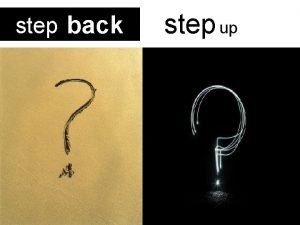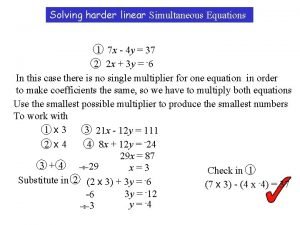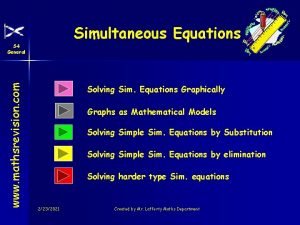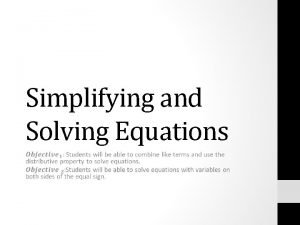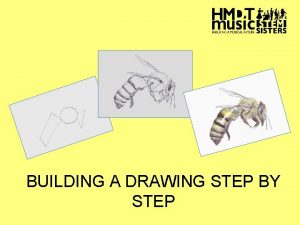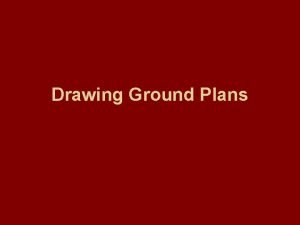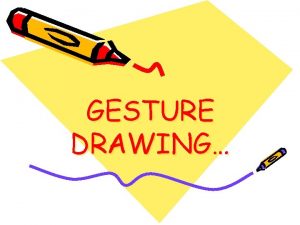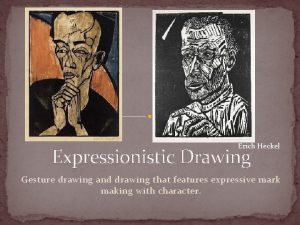Drawing A Ground Plan Step One Outline of














- Slides: 14

Drawing A Ground Plan Step One: Outline of the type of stage End on or proscenium arch: All the audience are seated together facing the stage. Thrust: The audience sit on three sides of the stage. 1

Traverse: The audience sit in two lines facing each other. In-theround: The audience surround the actors in a circle of square. 2

3

Step Four: Adding Stage Flats (perimeter scenery) You must now use all the information you have gathered from the script to make decisions about the scenery which will delineate the acting space from the wings. This can be done using scenic cloths or flats. So what is a flat? Flats A flat is a piece of scenery used to represent a wall or to conceal a backstage area. A series of flats can be joined together to make a run, where each flat is supported by a brace with a heavy weight attached. 4

5

6

7

8

Curtains (continued) Drapery There are different types of curtains that are used for different purposes: backdrops (also called a backcloth) - a piece of cloth hung behind the stage in a theatre as part of the scenery that can be painted or have coloured light or projections shone onto it borders - wide and short drapes that mask the top of the stage where lights are hung gauze (also called a scrim) - a thin curtain that can be lit either from the front to make it opaque, or from behind to make it transparent legs - long and narrow drapes used to mask the wing space tabs - the name for stage curtains that can open horizontally or fly vertically ground row - a long, low piece of stage scenery, built to simulate part of a landscape. It is sometimes used to conceal lanterns from the audience iron - a safety curtain designed to prevent stage fires spreading into the auditorium 9

If there is an item of furniture that you wish to use but no universal 10 symbol, simply make one up and add it to the key or legend* that will accompany your ground plan. *an explanatory list of symbols.

Levels A set designer can vary levels through the use of rostra, ramps and steps. Ordinary blocks, staging units, scaffolding and planks can be used to create levels and can be joined together to create steps or other shapes. Levels are often used in productions to portray a character’s status, power or situation. More scenic devices There are several other scenic devices that can be incorporated into a set design: set dressing - smaller items that add details to a set, such as stage furniture, to help establish setting and era entrances and exits - a set designer might include naturalistic doors or performers may enter from the wing space or even enter or exit from trap doors floors - sets usually incorporate a floor that is fixed to the stage pyrotechnics (pyro) - the use of fireworks within theatre to create effects, eg. explosions hydraulics - machinery used in large-scale productions to move set, usually up and down 11

smoke - used to create dramatic effects and created with a fogger or a hazer truck - a moving platform on which a piece of scenery is built to facilitate scene changing revolve - a turntable built into the stage floor on which scenery can be set and then turned flying - involves a manual or electric system that lifts performers off the stage, allowing for stunts and aerial sequences Projections are becoming more common within set design and can be used to add detail and texture on stage. In some venues scenery can be projected, which can be very effective but can have limitations. For example, unless it can be projected from behind the set, actors will cast shadows onto it. You should now practise drawing ground plans and hand them in to your 12 teacher to make sure you have understood this section of the course.

It is important that all mistakes and discarded ideas you make in the 13 design process are kept as they will be used in the development board.

Difference Between a Ground Plan and an Elevation When architects design buildings, they have to do 2 D drawings to show what the building will look like from each side. These drawings are called plans and elevations. The view from the top is called the plan. The views from the front and sides are called the elevations. In Drama, when designing sets, you will only ever complete front elevations for proscenium arch theatre productions and may be require to show side elevations for thrust staging, avenue staging and theatre in the round. If you go on to study set design at college or university this will be referred to as rendering. A rendering is a coloured sketch of the finished set as it will appear, under light, to an audience 14 member seated in the center of the house.
 Step 1 step 2 step 3 step 4
Step 1 step 2 step 3 step 4 Phase one denial
Phase one denial Alexander hamilton financial
Alexander hamilton financial One team one plan one goal
One team one plan one goal Disking meaning in dentistry
Disking meaning in dentistry The age of the dinosaurs text structure
The age of the dinosaurs text structure What is the first step in writing an informative essay
What is the first step in writing an informative essay Steps of argumentative essay
Steps of argumentative essay Step up step back
Step up step back Factoring by square roots
Factoring by square roots Linear equation solver with steps
Linear equation solver with steps Simultaneous equations step by step
Simultaneous equations step by step Combine like terms equations
Combine like terms equations Steps in photosynthesis
Steps in photosynthesis Particle filter example step by step
Particle filter example step by step








